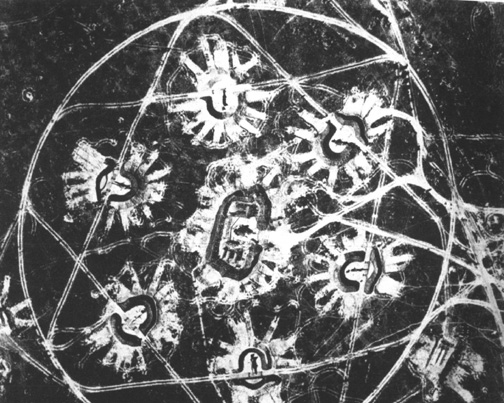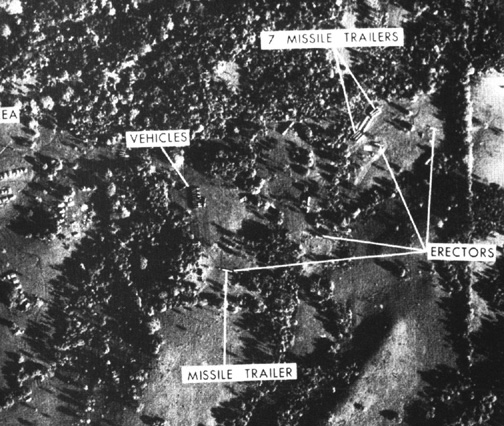|
The Impact of U.S. Aerial Reconnaissance during the Early Cold War (1947-1962): Service & Sacrifice of the Cold Warriors |
||||||
|
Page 2 of 5 Pages Beyond the U-2 As more U-2 missions, combined with HUMINT from inside Cuba, began to build a case for the possible installation of nuclear missiles, President Kennedy authorized an increase of U-2 missions over the island. This increase in aerial reconnaissance coverage was caveated with the limit that all future U-2 flights were to be conducted with USAF personnel and U-2’s from the Strategic Air Command. (124) President Kennedy ordered the change from CIA to USAF missions in case there were any shootdowns or losses. His reasoning was that USAF pilots could be protected and treated as Prisoners of War versus CIA pilots who would be considered spies. (125) In the meantime, the JCS enlisted the support of additional aerial reconnaissance assets. Air Force RB-47’s were brought in to fly ELINT missions around the periphery of the island along with USN F3D ELINT and EC-121 SIGINT aircraft. (126) |
||||||
 |
||||||
|
Source: Paul Lashmar: Spy Flights of the Cold War (Annapolis: Naval Institute Press, 1996), 176. |
||||||
| Eyeball to Eyeball:
On 14 October 1962, A SAC U-2F brought back the difinitive proof of Soviet installation of nuclear missiles in Cuba. Flying from the 4080th Strategic Reconnaissance Wing, Laughlin AFB, Texas, one of the two U-2’s brought back photos which clearly showed Soviet SS-4 Medium Range Ballistic Missiles (MRBM) being set up in the San Cristobal section of northeast Cuba. On 16 October, President Kennedy requested increased aerial reconnaissance and six U-2 missions were flown the next day. From these missions, photo-interpreters were able to identify six SS-4 MRBM and SS-5 Intermediate Range Ballistic Missile sites under construction. (127) |
||||||
 |
||||||
|
Source: Larry Davis, U-2 Spyplanes in Action (Carrollton: Squadron/Signals Publication, Inc. 1988), 2. |
||||||
| This paper will not attempt to cover the day-to-day drama that unfolded during the Cuban Missile Crisis but will reiterate the impact of aerial reconnaissance on the event. Many civilian and military historians point to this confrontation as the one in history which brought the U.S. and USSR closest to global nuclear exchange. What few emphasize though is that U.S. aerial reconnaissance was “the” determining factor that gave military commanders and the national command authority the definitive edge during this crisis. The raw intelligence data provided by CIA and military aerial reconnaissance aircraft covered the spectrum of intelligence requirements essential to resolve the issue – indications, warning, evidence and monitoring.
The price of this intelligence support, like that of the entire early Cold War period, did not come cheap. In addition to the loss of Major Rudolf Anderson and his U-2 shot down by SA-2s on 27 October 1962, two additional U-2’s were lost. The circumstances of these additional U-2 losses have never been resolved - if from accidents, in-flight emergencies, or shootdowns. SAC also lost an RB-47 while monitoring Soviet shipping during the crisis. The reconnaissance aircraft crashed while taking off from Kindley AFB, Bermuda, killing all four crewmen. (128) |
||||||
|
Attributions (124) In 1956, SAC rejected Kelly Johnson’s U-2 design with General LeMay quoted as saying he didn’t need a glider with no guns or wheels and if he needed aerial reconnaissance he’d use one of his B-36’s. By the time the U-2 program was approved and placed under SAC, he understood the importance of having the aircraft because the CIA’s intelligence collection affected his bomber procurement. By 1960, SAC had its own fleet of 24 U-2’s and was using them for peripheral SIGINT and PHOTINT missions. End of Page 2 of 5 Pages, Chapter 5 — Go to Page 3 You may go to Page — 1 — 2 — 3 — 4 — 5 — this chapter or you may go to Cover Page — Editor’s Introduction — Overview Acknowledgments — Table of Contents Appendixes — A — B — C — D |
||||||